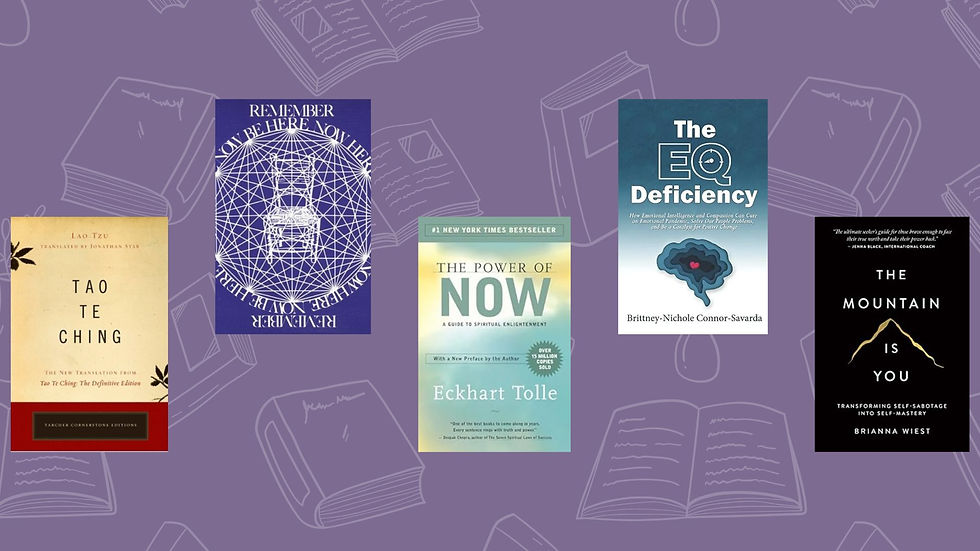From Reactivity to Creativity: Navigating Setbacks by Leveraging Emotional Intelligence
- Doni Landefeld, Ph.D.

- Jun 1
- 3 min read

Life — and leadership — aren’t about avoiding setbacks. They’re about how we choose to move through them. In today’s unpredictable world, many leaders find themselves stuck in reactivity: reacting emotionally to challenges, operating from fear or frustration, and clinging to old patterns that no longer serve them.
But here’s the truth: the most fulfilled and impactful leaders know how to adapt — and even more importantly, how to create. They tap into Emotional Intelligence (EQ) to shift from knee-jerk reactions to thoughtful creativity, opening doors to solutions and growth they could never access otherwise.
Why Reactivity Keeps Us Small
When we’re reactive, we’re often operating from the amygdala — the "threat detector" part of our brain. We may feel flooded with anxiety, anger, defensiveness, or discouragement. While these emotions are natural, staying in them keeps us stuck. Reactivity narrows our perspective and limits our options.
Think about the last time you fired off a quick email in frustration or made a snap decision under pressure. Chances are, it didn’t lead to your best work — or your best leadership moment. This is a sabotaging moment when our mind is not serving as our best friend.
Adapting: The Bridge to Creativity
The good news? With self-awareness and intentional practice, we can move from reactivity to adapting. Adaptation doesn’t mean passive acceptance; it means flexibly assessing the situation, regulating our emotional responses, and choosing a path forward that aligns with our values and goals.
When we adapt, we shift from "Why is this happening to me?" to "How can I respond to this in a way that moves me — and others — forward?"
Adaptation is where resilience is built. It’s where wisdom emerges. But it’s still not the final destination.
Creativity: The New Frontier of Leadership
The leaders who leave the most lasting impact — and live the most fulfilled lives — operate from creativity. Creativity asks:
What new possibilities are available here?
How can I reframe this challenge into an opportunity?
Who might I become because of this experience?
When we lead from creativity, we expand beyond the problem itself. We bring vision, innovation, and optimism to our leadership. We model Emotional Intelligence not only in how we manage ourselves but in how we inspire and uplift those around us.
"Between stimulus and response there is a space. In that space is our power to choose our response. In our response lies our growth and our freedom." - Viktor Frankl
Tips for Elevating from Reactivity to Creativity
Pause Before You Respond
When you feel triggered, breathe. Count to five before speaking. This simple pause allows your brain’s prefrontal cortex — your "thinking brain" — to engage, giving you access to greater emotional regulation and better decision-making. If more time is needed than counting to five, I recommend taking a “time-out” to allow more time for grounding and a re-set.
Name What You’re Feeling
Emotional Intelligence starts with naming our emotions without judgment. Instead of “I’m overwhelmed,” get specific: “I’m feeling anxious because I value doing this well and I’m afraid I might fall short.” Labeling your emotions reduces their intensity and gives you power over them. That which we can name, we can tame.
Ask Yourself a Creative Question
Instead of staying in “problem” mode, ask:
o What’s possible now?
o How could this challenge make me a better leader?
o What’s one bold move I could try that I haven’t considered before?
Revisit Your Core Values
When in doubt, anchor back to your "why." Your values are the North Star that guide you through any storm. Leading creatively means making choices that reflect who you are at your best, even when circumstances are tough.
Cultivate a Growth Mindset
See setbacks not as evidence of failure, but as data. Every misstep or challenge carries the seeds of future success — if we’re willing to look for them.
Engage in Reflective Practice
Regularly set aside time to reflect:
o What went well today?
o Where was I reactive?
o Where did I choose to adapt or create instead?Reflection deepens your Emotional Intelligence and accelerates your evolution as a leader.
Living a Fulfilled, Impactful Life
Ultimately, the journey from reactivity to creativity isn’t just about leading more effectively — it’s about living more fully. It’s about meeting life with curiosity, compassion, and courage. It’s about becoming the kind of person and leader who turns setbacks into stepping-stones and challenges into canvases for new dreams.
You don’t have to strive for perfection. Instead, you can simply be committed: to noticing, adapting, creating, and leading with your full heart and mind.
The world doesn’t need more reactive leaders. It needs more creative ones. Are you up for the opportunity to grow your creativity for greater impact?



Comments